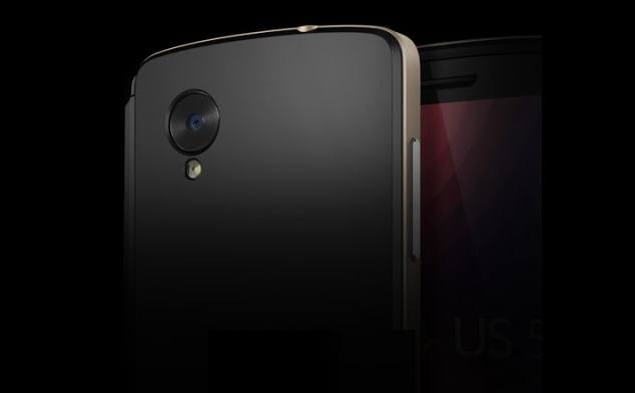Crafting a good sales pitch is not easy.
That's because a sales pitch is no longer a “pitch” in the sense that you throw information at your customer as a baseball player would pitch a baseball at a batter.
Nowadays, an effective sales pitch is a two-way street -- a conversation where you listen to the buyer, ask real questions, and offer them a solution to a challenge they’re experiencing.
A good sales pitch starts with a great first impression. Sales professionals work hard to make a memorable and positive initial impact by creating laser-focused one-liners, but it’s just as important that your short, snappy delivery also resonates long after you’ve delivered that opening line.
You want a presentation that holds your audience’s attention -- the longer you're able to keep that attention, the higher your chances of winning them over. And captivating your audience involves being prepared with relevant buyer information, and a pitch that actively includes the buyer in the discussion.
As simple as it sounds, effective sales pitches require upfront work and a conscious effort to stray from the script. Creating effective sales presentations that are collaborative is an art that’s perfected over time and comes with years of hands-on experience.
Knowing that, here are a few tips to get you on your way to a more effective sales pitch.
1. Do the Due Diligence
Unless you're pitching a timeshare at the fountain of youth - your product isn't likely going to sell itself. As mentioned, it's not just tossing information at the buyer anymore, but crafting the pitch that will be the most successful. Making the perfect pitch requires you to understand your customer, so if you're not researching your customer, you are severely decreasing your chances of making that deal.
Do Your Research: 82% of sales people are not aligned with the needs of their buyer. If you’re only espousing why you like the product -- that value may be completely lost on the buyer.
Your sales pitch should be different each time you deliver it. This can’t be emphasized enough. If you come in with the story from only your angle, is it any wonder that it doesn’t resonate with your audience?
Prior to presenting your pitch to the buyer, you should conduct thorough research on their company, their industry, and competitors. During your initial contact, be sure to ask the right questions so you can tailor your message to address that business’ specific needs and ease the deal to the next step.
Great research will also eliminate unnecessary noise and will keep the buyer(s) engaged. Show them that you understand their business with a lean message that highlights your product’s features that matters to them the most.
2. Best Decision You've Ever Made
All of the research and customer information in the world won’t help you if you aren’t in touch with the actual decision maker who can approve the purchase.
Before the actual sales pitch, ensure that you are talking to the person who not only truly understands the business, but is also a decision maker. If you can’t figure this out through your own research, go ahead and respectfully ask your contact with the company; they don’t want their time wasted either.

3. Give Them the Answers To Your Homework
You've done your homework, now share your answers to a problem they're struggling with.
Guy Kawasaki, an author and venture capitalist said, “Enchantment is the purest form of sales. Enchantment is all about changing people’s hearts, minds and actions because you provide them a vision or a way to do things better. The difference between enchantment and simple sales is that with enchantment you have the other person’s best interests at heart too.”
It’s no secret that customers respond most to products that solve a current problem. A successful sales pitch will acknowledge that problem (via research) and provide a solution. Even if your company only offers one product, each pitch should speak to the unique challenges of the business you’re pitching.
Your message should be honed on a specific product feature or features that the audience will benefit most from.
4. Address Objections with Objections (Respectfully)
As you’re reviewing your sales message, be sure your presentation not only includes thorough research and solves a customer problem, but that the pitch also addresses potential sales objections that may come up.
The most common sales objections fall in four buckets: Budget, Authority, Need, and Time (also known as BANT). You may not need to have a detailed response to all four, but be prepared to discuss each. The key here is to offer up a reply that shows value to your buyer.
Does the target audience currently have a competing product that is similar? If so, highlight the features that differentiate your product. Do they not have budget this quarter? Talk to how much money your product can save them.
Over time, you’ll hone your objection-response based on the feedback you receive in face-to-face sales meetings. In the meantime, leverage customer and product research and use that knowledge in handling objections.
5. You're Listening, But Are You Hearing Your Buyer?
You've put together a fantastic pitch and you feel as if you've covered every base, but even though you’re there to pitch your product and have put hours into the preparation - that doesn’t mean you know everything.
If you’re on a script -- it’s time to put it down and don't be overzelous or overconfident -- go into the pitch with an open mind and aim to let the buyer do most of the talking.
Check in with the buyer during your pitch - take the time to listen to them and respond with deep, thoughtful follow-up questions. This is critical step to really understanding their business needs and ultimately closing the deal. If you’re listening and asking the right questions, you can adjust your sales message to one that sounds really attractive to the buyer.
If your pitch goes well and you have your ears open, it should feel less like a business presentation and more like a healthy conversation about their business needs.
6. A Call for "Call to Actions"
Even though listening to your buyer is critical - don’t just pack up after your pitch, shrug your shoulders and wait for the customer to define the next steps.
Every sales pitch should end with a call to action that makes sense. Even if the customer isn’t ready to complete the sale yet, be sure to keep the prospect on the journey and move forward with a follow-up meeting or a trial period.
Never wait for the customer to make the call to action. This is solely the salesperson’s responsibility, and failing to be proactive could result in the meeting or relationship ending before you have met your purpose for coming.
7. Reference a Referral
Ok, this isn't really a step, but more a a head start for your next pitches.
Ask current customers that you have a healthy relationship with for referrals to other potential prospects. Referrals are more likely to complete a sale than any other method, and generally a customer who is happy with your service will be happy to spread the word.
However, remember a referral without an introduction is ice cold, so be sure to ask for a quick email introduction rather than just leaving with a name and phone number
Game On
Congratulations, you’ve gotten to the point of bringing a prospective buyer into the same room to hear your pitch, so don’t go into the presentation under-prepared. It’s no easy feat to get in front of a potential customer, so don’t waste their time and yours with a long-winded, boring sales pitch that isn't relevant and says little to nothing at all.
So, keep the pitch on-message, keep it clear and you'll keep your buyer's attention. Review it repeatedly and trim excess until it’s as concise as possible without losing the intent. Remove unnecessary buzzwords, like “synergy” and “best practice" -- you won't need these words if you know your customer's needs.

















